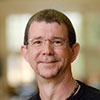This article is more than 5 years old.
Yesterday Craig and I attended the online class “Preserving Oral Histories” offered through Solinet.The class provided information on preserving existing and future oral histories and what challenges involved with reformatting and digitizing projects.
The instructor, Karen McClurken, started out my emphasizing the most obvious first; prevent your oral history from being erased. She then went into how to assess the condition of your existing oral histories. She showed three free Audiovisual surveys that can be used rank collections based on condition, level of existing deterioration, and risk of future deterioration associated with different formats. Next she covered caring for the master recording. She emphasized using the highest quality available for your original master and to use that master only to make new dubbing masters. Be sure to store the masters separately from the copies and master dubs and label oral histories consistently among the different formats. She covered methods for housing and storing the different format types and talked about what to consider when digitizing. A few things to consider when digitizing are compressed versus uncompressed, different audio and video formats, sample rates, and bit-depth. And of course there is always the digital rights permission you have to worry about.
The last 30 minutes Karen talk about what to think about for new oral histories.
Will it be audio, video, or both? Audio will have less equipment while video there is lighting along with sound quality to consider.
How much can you spend? Again, get the highest quality equipment you can afford. What equipment is needed will depend on the format that is chosen.
What feature are most important and what format best help meet them?
Can interviewer effectively use equipment? This is important so if the interviewer is uncomfortable with the equipment some training may be needed.
Overall the online class was interesting and I left with ideas that I hadn’t thought about or considered.
